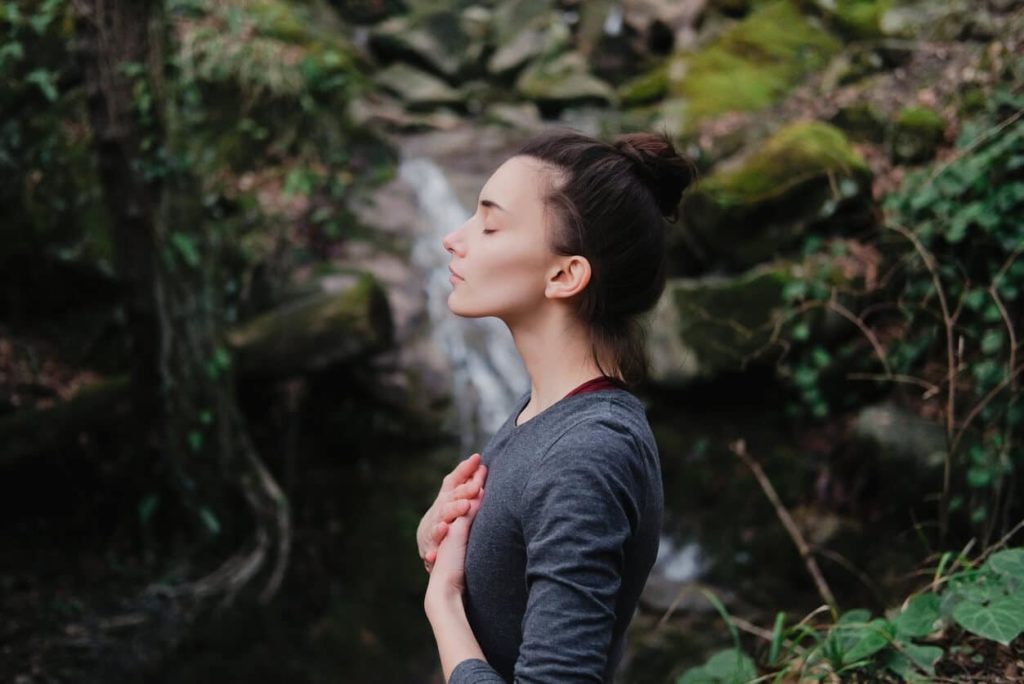We live in a fast-paced world, surrounded by technology and endless responsibilities. With so much to do, it’s easy to overlook the importance of connecting with nature.
Many of us intuitively recognize that spending time in nature can be restorative. But, did you know that it can also have a positive impact on our physical and mental health?
The benefits of spending time in nature are undeniable and well-documented and many experts now consider time in the outdoors to be a form of medicine for the mind and body.
As we’re squarely in the middle of winter here in NJ, we wanted to provide some food for thought (and motivation!) to get outside.
What we can learn from the Nordics:
For those living in regions that experience cold winters and shorter/darker days, it’s convenient to not spend time outdoors during the winter months.
However, we can learn quite a lot from the Nordics. Those in Denmark, Sweden, Norway, Finland and Iceland experience notoriously long and harsh winters yet find time to embrace the outdoors year-round.
Some of the things we can learn from them include:
- Dress appropriately: People in cold Nordic countries have learned to dress in layers and wear warm clothing to stay comfortable in harsh weather conditions.
- Stay active: People in these countries are known to be active, and they often engage in outdoor activities such as skiing, snowshoeing, and hiking, which can provide numerous physical and mental health benefits.
- Incorporate friends + community: Spending time outdoors is often a social activity in Nordic countries, and people there have developed a strong sense of community through their shared love of nature.
- Soak in natural light: During the winter months, there is limited daylight in many Nordic countries, and people there have learned the importance of getting outside and exposing themselves to natural light to boost their mood and counteract the effects of seasonal affective disorder (SAD).
While many still believe that we “catch a cold” from time spent in the cold outdoors, consider that exposure to cold temperatures can actually increase the production of white blood cells and other immune system components to fight off infection and disease.
Translation: Spending time in the cold may actually improve our immune system and help to build resilience.
What we can learn from the Japanese:
In recent years the Japanese practice of “shinrin-yoku,” or forest bathing, has gained traction globally.
Forest bathing? Yes. Forest bathing.
Forest bathing involves spending time in forests and other natural environments to improve physical and mental health. The concept is based on the idea that spending time in nature can help reduce stress and improve overall well-being by stimulating the senses and promoting a deep connection with the natural world.
In 2016, after seeing a growing body of research supporting the benefits of forest bathing, the Japanese Ministry of Agriculture, Forestry, and Fisheries even launched a national forest therapy program, with the goal of promoting the health benefits of spending time in forests.
Some forest bathing best practices:
- Disconnect from technology: Turn off your phone and other devices to fully immerse yourself in the natural environment.
- Slow down and focus on your senses: Use your senses to engage with the environment, such as by paying attention to the sounds, smells, and textures of the forest.
- Walk slowly and mindfully: Take a slow, leisurely walk, paying attention to your body and breathing.
- Do it regularly: Regularly spending time in nature (ideally 5hrs/wk) can help to sustain the benefits over time.
Grounding:
Perhaps not a great winter activity, grounding (also known as earthing) is a practice that involves direct physical contact with the earth, such as walking barefoot on grass, sand, or soil.
Now, before you check to see if our tin foil hats are strapped on too tight, hear us out.
The idea behind grounding is that it helps to reduce inflammation and improve overall health by promoting the transfer of electrons from the earth to the body.
The earth is a source of free electrons, which are negatively charged particles that can help to neutralize positively charged particles in the body that contribute to inflammation and other health problems.
When we walk barefoot on the ground, the soles of our feet come into direct contact with the earth, allowing us to absorb these free electrons into our bodies.
While current research is still preliminary, many people report feeling improved physical and mental well-being after spending time grounded, and there is a growing body of scientific evidence to support the potential health benefits of this practice.
Noted benefits include reducing inflammation, stress, and anxiety. It’s also believed that grounding can have an impact on the nervous system and the circadian rhythm, helping to regulate the production of hormones and improve sleep.
Some grounding best practices:
- Spend time barefoot outside: Spend time walking barefoot on grass, sand, or soil, or sit with bare feet on the ground, to allow for direct physical contact with the earth.
- Use grounding products: There are a variety of grounding products available, such as mats and sheets, that can help to promote the transfer of electrons from the earth to the body.
- Practice mindfulness: Combine grounding with mindfulness practices, such as meditation, to help focus your attention on the present moment and enhance the benefits of grounding.
- Incorporate it daily: Make grounding a regular part of your daily routine, such as by spending time barefoot outside each morning or evening.
What the studies say:
Numerous studies have shown that spending time in nature can have a positive impact on mental health and well-being.
A few of them:
International Journal of Environmental Research and Public Health:
Study found that exposure to forest environments resulted in lower levels of cortisol, lower blood pressure, improved mood, reduced symptoms of depression and anxiety, and improvements in overall life satisfaction.
Environmental Science & Technology:
Study found that just five minutes of exposure to nature can lower stress levels and improve overall mood.
American Journal of Public Health:
Study found that people who live in areas with higher levels of green space have a lower risk of obesity, type 2 diabetes, and cardiovascular disease.
Journal of Affective Disorders:
Study found that participation in nature-based therapy reduced symptoms of anxiety and depression in patients with major depressive disorder. Additionally, outdoor light therapy was an effective treatment for season affective disorder (SAD), and a review of existing research found that exposure to natural light, especially during the winter months, can have a positive impact on SAD symptoms.
Study found that participants who took a two-hour forest bath showed a significant decrease in symptoms of anxiety and depression, as well as improved sleep and overall well-being.
Journal of Inflammation Research:
Study found that grounding reduced inflammation markers in the body.
Additional Sources:
- International Journal of Environmental Research and Public Health: https://www.ncbi.nlm.nih.gov/pmc/articles/PMC5569272/
- Journal of Affective Disorders: https://www.ncbi.nlm.nih.gov/pubmed/20404067
- Journal of Affective Disorders: https://www.ncbi.nlm.nih.gov/pmc/articles/PMC1640690/
Final Thoughts:
We all want to feel our best, especially in the thick of winter.
Whether it’s bundling up like the Nordics, forest bathing like the Japanese, or grounding like your tin-foil-hat-wearing financial planners (ehmm… Dennis), your time outdoors will pay dividends for your health.
Make the investment (i.e. get outside!) and reap the returns for mind, body, and soul.






